Megan Santiago's Blog, page 5
November 21, 2022
19 Important Facts That You Should Know About The Work From Home Jobs Industry
Working from home is becoming more and more popular. Many legitimate work-from-home jobs will allow you to work from the comfort of your own home. Finding a job that will enable you to work from home gives you more flexibility for things like childcare, travel, and disabilities.
In many ways, it can also save you money. Working from home can be a real boon for many people who want, or need, that flexibility. Many workers choose to work from home in this new economy, and many companies are moving to flex or work from home models.
If your company is not allowing you to work from home, you may want to consider getting one of these legitimate work-from-home jobs.
 Focusing on Legitimate Work from Home Jobs
Focusing on Legitimate Work from Home JobsWhy focus on the word “legitimate” when discussing work from home jobs? First, you must be very wary of stay-at-home and work-from-home jobs. Secondly, many job sites and opportunities can be a scam or not deliver precisely what they promise. Many companies tout the perks of working from home and flexible jobs but require expensive training (paid by you) or expensive equipment (paid by you) and then pay much less than what they promise.
So be careful that you only accept legitimate work from home jobs and that you know how to spot a scam so you don’t get screwed. Even if you are desperate for money, remember that a good job will pay you to work for them- not the other way around. While many jobs turn out to be scams, the work-from-home model seems to attract more than its fair share of scammers and predatory jobs. So make sure that you do your research and only start a job that you know to be legit, like these side hustles.
Some industries lend themselves to the work-from-home model, and they are a great place to look for jobs if you are trying to work from home!
20 Legitimate Work From Home Jobs You Can Try1. Virtual AssistantA virtual assistant is someone who performs remote administrative tasks for clients. Meaning, even without physically reporting at the client’s office, the VA or virtual assistant can access the documents needed to perform her role. You can work anywhere, especially from a home office. VAs may handle tasks like bookkeeping, data entry, appointment setting, and so much more.
2. Graphic DesignerThose who have a knack for design can earn a living out of their passion. Even those who don’t master the much-techy design software such as Adobe Illustrator can design through the free and pro accounts of Canva. They can create social media images, printables, ebooks, workbooks, etc. The list can be endless. Graphic design services are highly paid and can be done anywhere if the designer has the tools. A laptop and internet connection are all there is to it.
3. BloggerMany people who started and grew their blogs are already earning so much these days. However, if you want to reach where your blog income can replace your full-time income, you must also consider it their business and not just a hobby. Being a blogger takes a lot of work, but you can do it from your own home. Are you already a blogger and want to level up your blog? Then, check out the Money Mix Insiders Program and grow your blog from a hobby to a real job!
4. Freelance WriterThere are a lot of websites and blogs, and they do need writers to publish regular content. But, aside from that, the booming e-commerce industry has also paved the way to open doors for writers to create their product descriptions, email newsletters, sales funnels, Facebook ads copy, and more. As long as the applicants know how to write well and provide writing samples that impress the prospective client, they are good.
5. Social Media ManagerAbout half of the total global population today spends 144 minutes on social media. So no wonder businesses turn to social media to increase their sales while public figures and advocacy groups reach more people and broaden their influence. That is where social media managers come in. Social media managers are hired to help the social media accounts of their clients grow by regularly posting updates, engaging their pages’ fans or group members through the comments, answering messages, and more.
6. Certified Public AccountantSince CPAs work in a solitary environment, many CPAs are either self-employed or have the option of working from home. For example, you can become a freelance CPA and create your own business, or you can join a large or small public firm and see if they have a work-from-home option.
7. Online Personal Trainer/Fitness InstructorDespite the pandemic, more people are taking steps to improve their health. Online personal trainers or fitness instructors are happy to assist and monitor the fitness journey of their clients. This job may demand a certification, but it does not necessarily require a degree.
8. Web DeveloperIf you’re desperate for a career change and you love building websites, this can be a rewarding and versatile job for you. A Web Developer is responsible for designing and implementing the websites, web applications, and online stores that people use every day.
9. CoachCoaching is a kind of service that supports someone towards a goal. For example, you can be a life coach and help clients deal with depression and anxiety. A life coach is responsible for helping clients achieve their personal and professional goals. This includes working with clients to identify and overcome obstacles, set achievable goals, and maintain a positive outlook.
Holistic Anxiety Relief Course | Anxiety Healing Naturally| Holistic Momma -How to Learn relaxation techniques you can do anywhere.-Identify anxiety in yourself and others.-Learn how to better react to situations and set a firm foundation for dealing with stressful situations.Use Natural Supplements, Dietary, and Lifestyle changes to help you feel less anxious sooner.I am a Counselor in Training, so I share what I learn through my education and experience and the price will go up shortly--- However! You will get all of the free updates I make to the course at no additional charge to you! As I learn through research, my education, and personal experimentation of new supplement regimens I will share them with you!
 Buy Now We earn a commission if you make a purchase, at no additional cost to you. 10. Online Teacher/Tutor
Buy Now We earn a commission if you make a purchase, at no additional cost to you. 10. Online Teacher/TutorIt is possible to teach different languages or provide tutorial services for a specific school subject through the internet. In addition, many businesses employ teachers and tutors in a variety of fields.
The Online Teacher is responsible for providing instruction to students in the form of video lessons. This includes delivering engaging and effective lessons that meet the learning objectives and support the student’s progress.
11. TranscriptionistA Transcriptionist will be responsible for accurately transcribing audio or video recordings. This includes transcribing telephone conversations, video conferencing, and other recorded media. You will need a good laptop, good headphones, and probably specific software for this work-from-home job, but once you have the equipment, it has a relatively low barrier of entry. You can read more about good transcription jobs here.
12. Medical Coding and BillingMedical Coding is the process of assigning a code to a medical diagnosis or procedure, using the International Classification of Diseases (ICD) or another coding system. The code is used for billing, record keeping, and reporting purposes. This field is filled with legitimate work from home jobs, but they require specific training and experience.
13. SEO SpecialistSEO (Search Engine Optimization) Specialist is one of the most in-demand and highly paid online jobs in the market today. Companies understand that social media is not enough to have a thriving online business. Rather, SEO allows any business to be found, especially on Google.
An SEO specialist is responsible for implementing search engine optimization strategies and managing their effectiveness. They work closely with the marketing team to ensure that the website content is optimized for search engines. In addition, they develop a strategy for off-site optimization to help drive traffic to the site.
14. Amazon VAAmazon store owners are always searching for people to join their team. So if you are keen on providing administrative tasks, this job is for you.
Amazon VAs are responsible for performing tasks and running reports to support Amazon Sellers. VAs may work on various tasks and projects, including Creating, updating, and deleting listings, Sending and responding to customer inquiries, Maintaining customer information, and managing the inventory of products in the Amazon catalog.
15. Cold callerA cold caller is a telemarketing strategy that helps companies communicate with potential buyers over the phone to promote a new product or service. Usually, companies in the real estate niche use this strategy.
16. Website or Application TesterWebsite and application testers review websites and software in detail. We won’t need internet savvy because some web and app developers want a random user’s perspective. However, subpar reviews, a lack of information, or technical problems may result in denied and unpaid reviews.
17. Data Entry SpecialistGeneral transcription, data mining, and web research are online jobs where data entry specialists can work. To be competent in this career, you must be able to type fast, have a keen eye for detail, and be proficient in using most Office tools.
18. Podcast EditorDo you listen to podcasts? I’m sure you’re wondering how episodes are curated, recorded, and published on Spotify or iTunes. Guess what? You can join the community and offer your services as a Podcast Editor. All you have to do is familiarize yourself with editing software like Audacity, Adobe Audition, Pro Tools, and GarageBand, and you’re ready to go.
19. Customer Service RepresentativeAs a work from home customer service representative, your duties are to take customer calls, answer their questions, confirm customer orders, and respond to customer feedback via phone, emails, or chat platforms. Your responsibilities require you to be familiar with the different services and products your company provides.
Work From Home JobsWorking from home can be a real game-changer for many people. If you really don’t want to return to the office, then consider checking out these legitimate work-from-home jobs and start being able to work from the comfort of your own home! Comfy pajamas are optional.
This post originally appeared on Savoteur.
Originally posted 2021-04-01 19:20:00.
Codependency Books: Getting the Love You Deeply Crave

Codependency is a theory that describes unhealthy patterns of codependents and their partners in a relationship. It is an imbalance of power and control in which codependents often give too much of themselves at the expense of their well-being.
Codependents generally enable their partner’s negative behaviors, including addiction, emotional or physical abuse, or other destructive behaviors. Codependent tendencies are often learned early in life and may be associated with attachment theory.
Fortunately, several great codependency books can help break these patterns to foster more positive, healthy relationships. Also, learning about attachment theory as a developmental tie-in can help.
Codependency and the Anxious Attachment StyleThe anxious attachment style can contribute to codependent tendencies. It is characterized by anxiety and insecurity in close relationships, often due to feelings of abandonment and rejection from childhood.
You may have developed anxious attachment tendencies if you grew up in a household where your parents were codependent, or the relationship was otherwise unhealthy. This experience can lead to codependent behaviors, such as thinking you are responsible for your partner or always needing to be there for them to avoid rejection.
Realizing that your attachment style may contribute to codependence is the first step in recovery. Use self-reflection, journaling, or therapy to explore your attachment style and identify and change any codependent behaviors you may be exhibiting.
Codependency Books That Can HelpPart of the recovery process for codependents is identifying the unhealthy patterns that keep them stuck and finding new, healthier ways to interact with others. Many great books can help with this process, including:
“Codependent No More” by Melody BeattieThis classic codependency book is a great resource for anyone who wants to break free and have better relationships. Through thoughtful reflections, exercises, and case studies, Beattie provides a step-by-step guide for moving away from codependency and toward healthier relationships.
The goal is to shift the focus away from your partner to yourself so that you can heal and develop a more balanced relationship. Since its release in 1986, “Codependent No More” has helped many people recover from codependency and develop healthier relationships. It can help you too!
“Boundaries: When to Say Yes, How to Say No To Take Control of Your Life” by Henry Cloud and John TownsendBoundaries are essential for healthy relationships, and learning to set and enforce boundaries can be a key step in overcoming codependency. Drs. Henry Cloud and John Townsend, both psychologists, provide practical guidance on setting boundaries in romantic relationships and with friends, coworkers, and family members.
This book offers strategies for setting boundaries that help you achieve your goals while still taking others’ needs into account. Whether you are recovering from codependency or want to improve your relationships, “Boundaries” can help you get there.
Boundary setting is critical in being able to feel like you function independently and you do not solely rely on those around you to be happy.
These books by Psychologist Dr. John Townsend and Dr. Henry Cloud have created these guides to help anyone struggling to be happy with themselves in any relationship.
Product Image Product Name / Primary Rating / Price Primary Button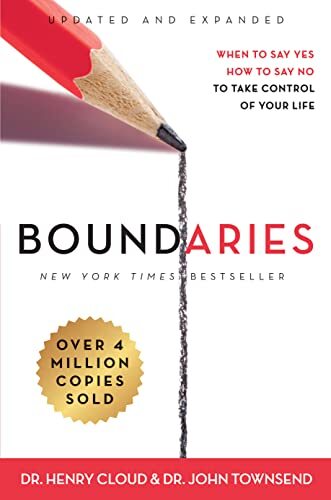 Boundaries Updated and Expanded Edition: When to Say Yes, How to Say No To Take Control of Your Life 4.5 $23.99 Buy Now
Boundaries Updated and Expanded Edition: When to Say Yes, How to Say No To Take Control of Your Life 4.5 $23.99 Buy Now 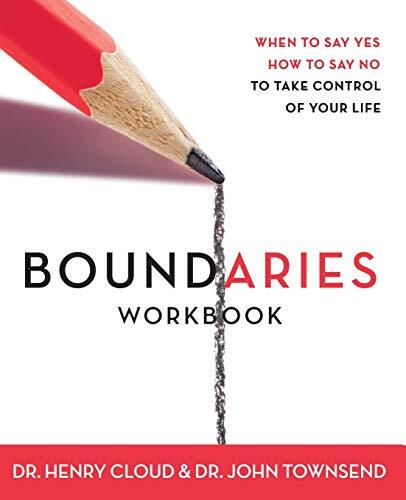 Boundaries Workbook: When to Say Yes When to Say No To Take Control of Your Life 4.0 $24.98 Buy Now
Boundaries Workbook: When to Say Yes When to Say No To Take Control of Your Life 4.0 $24.98 Buy Now 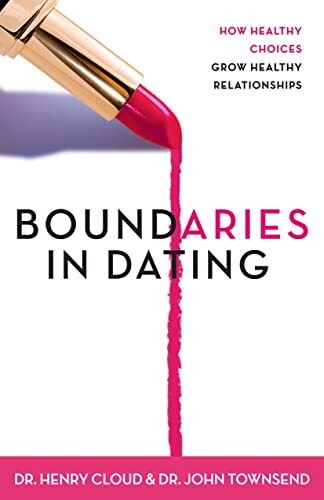 Boundaries in Dating: How Healthy Choices Grow Healthy Relationships 4.5 $7.92 Buy Now
Boundaries in Dating: How Healthy Choices Grow Healthy Relationships 4.5 $7.92 Buy Now 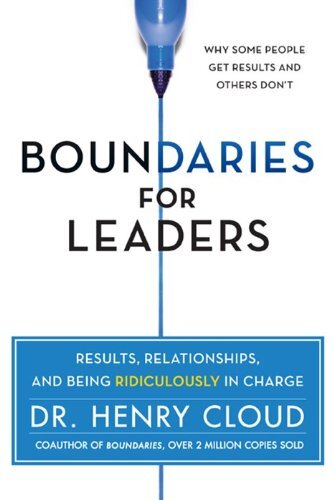 Boundaries for Leaders: Results, Relationships, and Being Ridiculously in Charge 4.5 $22.90 Buy Now
Boundaries for Leaders: Results, Relationships, and Being Ridiculously in Charge 4.5 $22.90 Buy Now  Boundaries Updated and Expanded Edition: When to Say Yes, How to Say No To Take Control of Your Life 4.5 $23.99 Buy Now
Boundaries Updated and Expanded Edition: When to Say Yes, How to Say No To Take Control of Your Life 4.5 $23.99 Buy Now  Boundaries Workbook: When to Say Yes When to Say No To Take Control of Your Life 4.0 $24.98 Buy Now
Boundaries Workbook: When to Say Yes When to Say No To Take Control of Your Life 4.0 $24.98 Buy Now  Boundaries in Dating: How Healthy Choices Grow Healthy Relationships 4.5 $7.92 Buy Now
Boundaries in Dating: How Healthy Choices Grow Healthy Relationships 4.5 $7.92 Buy Now  Boundaries for Leaders: Results, Relationships, and Being Ridiculously in Charge 4.5 $22.90 Buy Now 11/24/2022 09:46 am GMT “Anxiety in Relationship” by Gary Gottman
Boundaries for Leaders: Results, Relationships, and Being Ridiculously in Charge 4.5 $22.90 Buy Now 11/24/2022 09:46 am GMT “Anxiety in Relationship” by Gary GottmanThis book explores how anxiety can influence relationships and how you can control and improve your relationships. Gottman also extensively explores the themes of attachment styles, possessiveness, and fear of abandonment – all of which can play a role in codependency.
The author believes that with self-awareness and the right tools, you can overcome anxiety in relationships to build more positive, healthy connections. Also, by understanding the psychological roots of your attachment anxiety, you will learn how to face the problem and improve your relationships.
“The Language of Letting Go: Daily Meditations on Codependency” by Melody BeattieWhat could be better than a daily meditation guide for overcoming codependency? The “Language of Letting Go” by Melody Beattie is a practical, down-to-earth guide for codependents.
Each day’s meditation is accompanied by insightful, helpful reflections that can help you explore your thoughts and behaviors. Beattie also covers other topics, such as forgiveness, boundaries, acceptance, and self-care, which are important components of the recovery process.
Find the daily inspiration to work through your codependency and improve your relationships by picking up this book today.
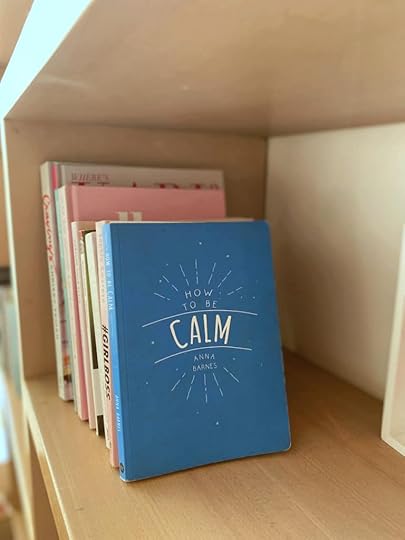 “Conquering Shame and Codependency: 8 Steps to Freeing the True You” by Darlene Lancer
“Conquering Shame and Codependency: 8 Steps to Freeing the True You” by Darlene LancerCodependent people are usually ashamed, unconfident, or even self-loathing. They often believe they don’t deserve happiness or love and may struggle to recognize their strengths and worthiness.
Darlene Lancer explains how shame and codependency are intertwined and how to free yourself from these negative forces. You cannot address one without addressing the other; without healing your codependency, it’s almost impossible to overcome your shame.
After reading the eight steps in this book, you will understand how to take back control of your life and make lasting changes in your relationships. It’s a great resource for overcoming codependency and building confidence and self-esteem.
“The Codependency Workbook: Simple Practices for Developing and Maintaining Your Independence” by Krystal Mazzola The Codependency Workbook: Simple Practices for Developing and Maintaining Your Independence $11.52The Codependency Workbook includes:
In-depth explanations?Better understand what it means to be codependent, how it relates to addiction, and the ways that CBT can help you address it. Modular approaches?Triage your biggest and most immediate concerns with help from exercises that you can complete in any order. Easy-to-use strategies?Make it simple to find the time and energy to heal using exercises that are both straightforward and don’t take long to complete.Break free from codependency and become independent with effective, evidence-based tools.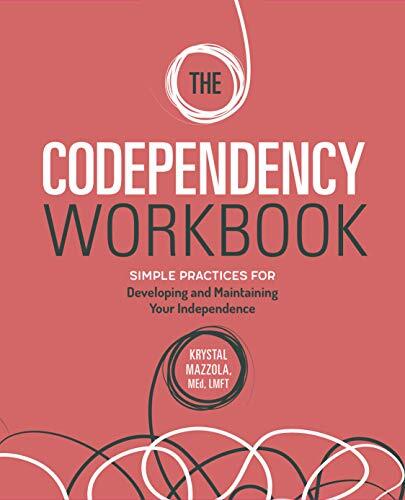 Buy Now We earn a commission if you make a purchase, at no additional cost to you. 11/23/2022 06:34 pm GMT
Buy Now We earn a commission if you make a purchase, at no additional cost to you. 11/23/2022 06:34 pm GMT This workbook is for anyone who wants to break out of their codependent lifestyle, improve their relationships, and reclaim their freedom. Krystal Mazzola’s book provides a clear, concise guide for overcoming codependency and includes interactive exercises to help you along the way.
The exercises are based on cognitive behavioral therapy (CBT) principles, so rest assured that implementing them will be both effective and practical. The goals of the exercises are to shift your thinking, identify and change your beliefs, manage, prevent and reduce conflicts, and reduce stress.
Each chapter ends with moments of reflection or summaries of the key points, so you can easily review what you’ve learned and digest how each concept relates to your life. It also motivates and inspires you to take action and get results.
Overcome Codependency and Get the Love You DesireBeing codependent is not healthy or practical and can affect your relationships and happiness. If you’re ready to break out of this destructive pattern, these books can help.
Each one provides a different perspective and approach to overcoming codependency, so you can find the tools that work best for you. With these codependency books, you’ll be well on your way to improving your relationships and getting the love you crave.
Be patient with yourself as you apply the strategies, but don’t get complacent. There is a reason codependency is referred to as a “relationship addiction.” If you aren’t committed and consistent, failure can easily creep in.
November 13, 2022
Therapist Recommended Anxiety Coping Skills for Kids
Adults are not the only ones who experience anxiety – kids can struggle with it too. If you notice your child experiencing excessive worry or fear, help them cope using proven anxiety coping skills.
Avoid playing down their anxiety, validate their feelings, and let them know it’s normal to feel anxious sometimes. Encourage them to talk about their worries and fears and remind them that they control their thoughts and actions.
Now, you can try some anxiety-coping skills therapists recommend.
Anxiety Coping Skills for KidsDeep Breathing for Kids
Anxiety and stressful situations often result in shallow and quick breathing, which can worsen feelings of panic. As a result, the muscles tighten, making it harder to focus. Deep breathing exercises can help slow down the breath, relax the muscles, and calm the mind.
Anxiety cannot thrive when the body is relaxed, so deep breathing can be a powerful tool for managing anxiety.
To do this exercise with your child:
Have them sit or lie comfortably and place one hand on their stomach and the other on their chest.Let them inhale through their nose, filling the stomach and chest.Exhale through their mouth, emptying their chest and stomach.Continue with slow, deep breaths for at least five minutes or until they feel calmer.Meditation Apps for KidsMeditation can be a helpful anxiety coping skill for kids, as it teaches them to focus on the present moment and let go of anxious thoughts.
Many kid-friendly meditation apps, such as Stop, Breathe & Think Kids, and Headspace for Kids, can guide your child through a calming meditation experience.
Check that the app is suitable for your child’s age and interests before downloading, as some more advanced meditations might not be appropriate for younger kids.
Progressive Muscle RelaxationLike deep breathing, progressive muscle relaxation can promote physical relaxation in the body, leading to a calm state of mind.
To do this exercise with your child, have them lie down or sit comfortably and focus on tensing and releasing different muscle groups. Start with the feet and move up to the neck and face, tensing each muscle group for a few seconds before fully releasing it.
This anxiety-coping skill can also be a helpful tool before bedtime to promote restful sleep.
Exercising When AnxiousPhysical activity can improve mood and reduce anxiety symptoms. Have your child engage in some form of exercise, like a short walk around the neighborhood or playing a sport they enjoy.
You can also do exercises with them, such as yoga or a dance party in the living room. The goal is to get their body moving and release some anxiety.
Please note that exercise should not replace therapy or medication for anxiety; it should only be a supplement in managing anxiety symptoms.
Hugs or SqueezesPhysical touch can release oxytocin, a hormone that promotes calm and relaxation. Ask your child to hug or squeeze a stuffed animal or stress ball when feeling anxious.
If you are physically present, hug and remind them that they are not alone in their anxiety. Children need this reassurance and support from their loved ones, and with time and practice, they can manage anxiety on their own.
Pointing to an Emotion Wheel
It can be difficult for children to verbalize emotions, especially during anxiety-inducing situations. Using an emotion wheel, a visual tool to identify and label emotions, can help them communicate their feelings and cope with their anxiety.
You can find printable emotion wheels online or make one together as a family. When your child is feeling anxious, have them point to the emotion they are experiencing and talk about it.
Grounding TechniquesWhen anxiety overwhelms your kids, and it’s hard to focus on the present moment, grounding techniques can bring your child back to reality.
Have them list five things they can see, four things they can touch, three things they can hear, two things they can smell, and one thing they can taste.
Another grounding technique is to make them focus on their senses and name three things they feel, such as the sensation of their feet on the ground or the feeling of a bracelet on their wrist.
Guided ImageryGuided imagery is a relaxation technique that uses the power of the imagination to visualize calming and peaceful scenes. Have your child close their eyes and imagine a safe and soothing place, like lying on a beach.
The peace of this calming place can counteract anxiety symptoms and promote relaxation.
This one can be fun and almost like a virtual reality. I do this with my children to help them pick a dream they would like to dream about when they have a nightmare or have a hard time going to sleep.
Positive Self-talk for KidsAs anxiety can often result in negative or self-defeating thoughts, teaching positive self-talk can be a beneficial anxiety coping skill for kids.
Teach your child to replace negative thoughts with positive affirmations, such as “I am strong” or “I can handle this anxiety.” You can also have them write positive mantras on sticky notes to place around the house as a constant reminder.
Journaling for KidsWriting down thoughts and feelings can be cathartic and provide insight into anxiety triggers and patterns. It is a safe place for kids to express themselves without fear of judgment. Let your child write in it whenever they feel anxious or overwhelmed.
You can also write in the journal together or come up with prompts for them to answer, such as “What is making me feel anxious today?” or “What are three things I am grateful for?”
Other anxiety coping skills for kids may include listening to music, coloring or drawing, and seeking support from trusted adults or friends. Help your child find what works best and remind them that managing anxiety takes time and practice.
Practice GratitudeA lot of times, we focus on “what is going wrong” and also “what we do not have.” Instead, we can focus on all that we are grateful for, giving our minds more positive information to pull from.
Start small, and you can use a gratitude journal to help you and your child keep track of all the small blessings you may be overlooking.
Research shows that gratitude is an effective treatment for improving our mood. When we struggle with anxiety or depression, we resemble a low mood due to fear/worry or a lack of motivation.
Gratitude gives us that mood boost and extra energy to get done what we want.
The 3 Minute Gratitude Journal for Kids: A Journal to Teach Children to Practice Gratitude and Mindfulness $6.99 The 3 Minute Gratitude Journal is a guide to cultivate an attitude of gratitude for children. It is a self exploration journal designed to focus on being thankful for what we have, the big things in life, as well as the simple joys. Each well designed and kid-friendly daily spread contains space to list out three things you are thankful for, a person who brought you joy and how you felt about your day.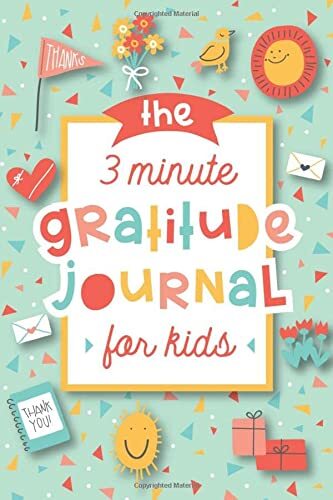 Buy Now We earn a commission if you make a purchase, at no additional cost to you. 11/13/2022 07:45 pm GMT Start Practicing These Coping Skills With Your Kids
Buy Now We earn a commission if you make a purchase, at no additional cost to you. 11/13/2022 07:45 pm GMT Start Practicing These Coping Skills With Your KidsRegularly practicing anxiety-coping skills with your child can help them manage their anxiety healthily and effectively. Don’t wait until anxiety becomes overwhelming – incorporate these skills into your child’s daily routine and be supportive in their journey to managing anxiety.
Remember that anxiety is different for everyone and may require professional help. If your child’s anxiety is interfering with their daily life, consider seeking support from a therapist or healthcare provider.
November 3, 2022
47+ Know Your Worth Quotes and Affirmations to Boost Your Self-esteem

Many people never realize their full potential because they don’t think they are worth anything. They put themselves down, doubt their abilities, and generally do not have a good opinion of themselves. It is a huge mistake!
If that’s your current state of mind, it’s time to change it. You are worth so much more than you give yourself credit for, and these “know your worth” quotes will remind you of that.
Use these affirmations as daily mantras and watch how quickly your confidence and productivity increase.
If you are struggling with understanding your worth it can cause anxiety and depression. Identifying those thoughts and replacing them with these “know your worth quotes” can help you fuel your mind with compassion and understanding.
Holistic Anxiety Relief Course | Anxiety Healing Naturally| Holistic Momma -How to Learn relaxation techniques you can do anywhere.-Identify anxiety in yourself and others.-Learn how to better react to situations and set a firm foundation for dealing with stressful situations.Use Natural Supplements, Dietary, and Lifestyle changes to help you feel less anxious sooner.I am a Counselor in Training, so I share what I learn through my education and experience and the price will go up shortly--- However! You will get all of the free updates I make to the course at no additional charge to you! As I learn through research, my education, and personal experimentation of new supplement regimens I will share them with you!
 Buy Now We earn a commission if you make a purchase, at no additional cost to you. Life-changing “Know Your Worth” Quotes
Buy Now We earn a commission if you make a purchase, at no additional cost to you. Life-changing “Know Your Worth” Quotes1. “Your value doesn’t decrease based on someone’s inability to see your worth.” – Unknown.
2. “Dignity will only happen when you realize that having someone in your life doesn’t validate your worth.” ? Shannon L. Alder.
3. “You are not what others say or think about you. You are who you choose to become.” ? Unknown.
4. “Your worth is not measured by your productivity or how much money you make. Your worth is inherent and cannot be taken away by anyone or anything.” – Unknown.

5. “Know your worth. Then add tax.” – Unknown.
6. “When you refuse to settle for less than the best…the best tends to track you down.” – Mandy Hale.
7. “When you think this pain is all you deserve, you are right. You are the only one that can decide how long you will walk in hell.” ? Shannon L. Alder.
Confidence-boosting “Know Your Worth” Quotes8. “You yourself, as much as anybody in the entire universe, deserve your love and affection.” – Buddha
9. “What a man thinks of himself, that it is which determines, or rather indicates his fate.” – Henry David Thoreau.
10. “I am convinced that most people do not grow up…We marry and dare to have children and call that growing up. I think what we do is mostly grow old. We carry accumulated years in our bodies and on our faces, but generally, our real selves, the children inside, are still innocent and shy as magnolias.” ? Maya Angelou.
11. “There is nothing enlightened about shrinking so that other people won’t feel insecure around you. We were born to manifest the glory of God within us.” ? Marianne Williamson.
12. “If you want to be successful, it’s just this simple: know what you’re doing, love what you’re doing, and believe in what you’re doing.” – Will Rogers.
13. “Confidence is not ‘they will like me,’ confidence is ‘I will be likable.'” – Unknown
14. “The moment you give up is the moment you let someone else win.” – Kobe Bryant.
15. “Success is not final, failure is not fatal: It is the courage to continue that counts.” – Winston Churchill.
Self-worth Quotes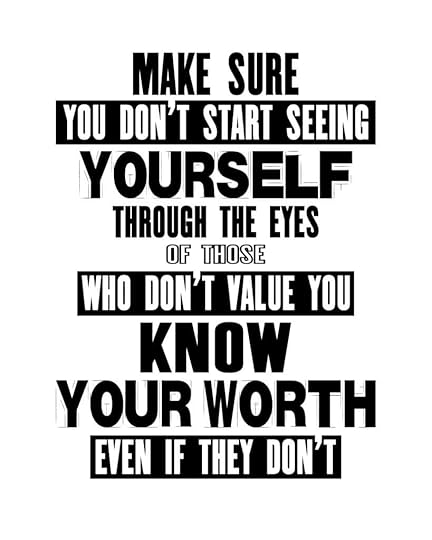
16. “If you don’t believe in yourself, then who will?” – Michael Korda
17. “You are not what others say or think about you. You are who you choose to become.” – Unknown.
18. “Your worth is not measured by your productivity or how much money you make. Your worth is inherent and cannot be taken away by anyone or anything.” – Unknown.
19. “I am worth a million times more than my worst mistake.” ? Unknown.
20. “Your value doesn’t decrease based on someone’s inability to see your worth.” – Unknown.
21. “You were born with potential. You were born with goodness and trust. You were born with ideals and dreams.” – Rumi.
22. You were born with greatness. You were born with wings. You are not meant for crawling, so don’t.” – Rumi.
23. “Worth comes from actions, not words.” – Unknown.
24. “I am enough of an artist to draw freely upon my imagination. Imagination is more important than knowledge. Knowledge is limited. Imagination encircles the world.” – Albert Einstein.
Positive Affirmations to Help You Know Your WorthTake things up a notch and use positive affirmations to help you boost your self-worth and confidence. Write these affirmations down, say them out loud, or post them in a visible location as reminders that you deserve the best for yourself.
25. I love myself unconditionally.
26. I am beautiful, intelligent, fun, and full of life.
27. I am worthy and deserving of love, happiness, and success.
28. I trust my abilities and inner wisdom to guide me toward the best path.
29. I am confident in my worth and value as a person.
30. I am proud of who I am and all that I have accomplished.
31. I am deserving of all the good things in my life.
32. I am confident and secure in my worth.
33. I trust myself to make the right decisions for my life.
34. I am strong, capable, and worthy of love and respect.
35. Nobody can make me feel inferior without my permission.
36. I am grateful for my unique talents and abilities.
37. I am capable of achieving anything I set my mind to.
38. I am enough just as I am. My worth is not based on others’ opinions or actions.
39. I choose to love and accept myself exactly as I am.
40. I am grateful for all that I have and all that I am.
41. I am enough. I am worthy. I am deserving of happiness and success.
42. I am grateful for my unique gifts and talents. I will use them to create a fulfilling and meaningful life.
43. I am worthy of love, happiness, success, and abundance in all areas of my life.
44. I trust in myself to conquer any challenge that comes my way.
45. I am proud of who I am and all that I have accomplished.
46. I choose to focus on my strengths and unique qualities.
47. My life is filled with love, happiness, and abundance.
48. Nothing can shake my confidence and belief in myself.
49. Greatness and success come easily to me.
Know Your Worth and Take Control of Your LifeNo matter what anyone else thinks or says, always remember that you are worthy and deserving of love and happiness. Start embracing these “know your worth quotes” and believe in yourself. You deserve it.
Surround yourself with positivity and people who lift you; don’t let anyone or anything diminish your worth. Be intentional about who you make your friends and partners, and don’t settle for anything less than what you deserve.
And whenever you feel down or unsure, come back to these quotes and affirmations. They will constantly remind you of your worth and the power to take control of your life and create the future you desire. Trust in yourself, and never forget how amazing and capable you are. You got this!
October 29, 2022
How to Discipline a 1-Year-Old: Teaching Resilience & Communication

Parenting a one-year-old can be challenging for anyone who wants to discipline and teach appropriate behavior. As a parent, you’re probably wondering what techniques are effective and how to balance setting limits while promoting positive behavior.
You can rest assured that you’re not the only parent facing these challenges, and there are ways to discipline a one-year-old effectively. However, discipline at this age should focus on teaching communication skills and resilience rather than punishment.
With time, your one-year-old will understand and respond to communication cues, such as using words to express themselves and learning to listen. They will also learn resilience by practicing self-control, delaying gratification, and understanding the consequences of their actions.
Here are some tips on how to discipline a one-year-old:
Give Clear Instructions and ExpectationsBabies at this age have a limited understanding of language and communication, so simplifying your instruction can help them understand. For example, instead of saying, “Please don’t throw the toy,” try, “Toy stays on the floor.”
You can also use sign language or gestures to supplement your instruction and make it easier for them to understand.
The Whole-Brain Child: 12 Revolutionary Strategies to Nurture Your Child's Developing Mind $14.99 Complete with age-appropriate strategies for dealing with day-to-day struggles and illustrations that will help you explain these concepts to your child.The Whole-Brain Child shows you how to cultivate healthy emotional and intellectual development so that your children can lead balanced, meaningful, and connected lives.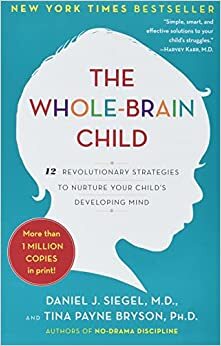 Buy Now We earn a commission if you make a purchase, at no additional cost to you. 10/30/2022 05:22 am GMT Redirect Unacceptable Behavior
Buy Now We earn a commission if you make a purchase, at no additional cost to you. 10/30/2022 05:22 am GMT Redirect Unacceptable BehaviorOne-year-olds will most likely do things you consider unacceptable, such as hitting or biting. Rather than scolding or punishing, redirect their attention to more appropriate behavior.
For example, if your child is hitting, try redirecting their hand to a doll or stuffed animal and showing them how to pat or hug gently.
Pick Your BattlesAsk yourself, “can I let this go?” and “what is the most important thing at this moment?” If your child is not harming themselves or others and they are not destroying property, then decide if it’s worth it. It may be wise if you can clean it later and be present in the moment.
Mindfulness is a great way to help you be less reactive to certain situations.
Know Your Limits
Identify if you are overreacting to a situation. Sometimes the discipline or the consequence does not match the severity of their actions. Check yourself and say, “am I hungry, tired, or bothered by something else I need to deal with to be a more relaxed parent now?”
Take a breather, meditate, relax, take a deep breath, eat, exercise, and get sunshine. If all else fails, watch a comedian or a comedy movie to distract you.
Encourage Positive BehaviorPraise and positive reinforcement can go a long way in promoting good behavior. When your one-year-old does something you approve of, such as sharing or playing nicely, praise them and offer encouragement.
You can also use reward systems, such as a sticker chart, to incentivize good behavior. Don’t rely too heavily on rewards; instead, focus on positive behavior.
Set BoundariesAlways set clear boundaries for your 1-year-old and consistently enforce them. This helps them understand your expectations and the consequences of their actions.
For example, if they throw a tantrum when leaving the park, remain calm and reiterate that it’s time to go home. If necessary, calmly remove them from the situation and explain why their behavior was unacceptable.
Walk the TalkYour actions can significantly impact how your baby learns and behaves. Make sure to lead by example in how you communicate and handle situations, as well as how you discipline them.
You must know that your child is always watching and mimicking your behavior, so it helps to set a good example for them to follow.
Apply Inductive DisciplineThe inductive discipline focuses on teaching and problem-solving rather than punishment. Instead of saying, “No hitting,” try explaining why hitting is not okay and how it can hurt others – or themselves.
You can also provide alternatives for unacceptable behavior, such as giving them a cushion to hit instead of hitting a person or suggesting they use words to express their frustrations.
Exercise Patience and Be ConsistentPatience and consistency are vital in disciplining a one-year-old. It may take time for them to understand and follow instructions, so don’t give up and continue reinforcing good behavior.
Also, ensure that everyone caring for the child is on the same page with discipline techniques and boundaries to avoid confusion and mixed messages. This problem, left unaddressed, can flaw your efforts and delay progress.
Prevent MisbehaviorIn addition to discipline, also try to prevent misbehavior in the first place. This can include not giving in to tantrums, baby-proofing the environment, and providing appropriate toys and activities to keep them occupied.
Also, keep them away from triggers or situations that may lead to misbehavior, such as being overly tired or hungry.
Can Your 1-Year-Old Understand Discipline?Now you know how to discipline a one-year-old, but is it even necessary at this age?
Experts say that while one-year-olds may not fully understand the concept of discipline, they can still learn appropriate behavior through positive reinforcement and redirecting unacceptable behavior.
Start teaching good behavior early on, as this lays the foundation for how they will behave in the future. Remember to be patient and consistent, and encourage positive behavior in your one-year-old. They are still learning and developing, after all.
Books and Videos That Can Help You Communicate BetterWe know that reading a blog post about how to discipline a one-year-old may not be sufficient enough. So, we’ve curated some books and videos that can offer more in-depth information and guidance on how to discipline and teach your one-year-old effectively.
Books:
“The Happiest Toddler on the Block” by Harvey Karp“No-Drama Discipline” by Daniel Siegel and Tina Payne Bryson“The Baby Book” by William and Martha Sears“1-2-3 Magic: Effective Discipline for Children 2-12” by Thomas Phelan“No Bad Kids: Toddler Discipline Without Shame” by Janet Lansbury“How to Talk So Little Kids Will Listen: A Survival Guide to Life with Children Ages 2-7″ by Joanna Faber and Julie King“1-2-3 Magic for Kids: Helping Your Children Understand the New Rules” by Thomas Phelan“The Whole-Brain Child: 12 Revolutionary Strategies to Nurture Your Child’s Developing Mind” by Daniel J. Siegel and Tina Payne Bryson.Videos:
Watch these helpful YouTube videos by Emma Hubbard, a pediatric occupational therapist.
Remember, every child is different, and there is no one-size-fits-all approach to discipline. We hope you find these resources helpful.
You’ve Got a Job to Do!As we said earlier, one-year-olds are still learning and developing. As their parent or caregiver, it’s up to you to teach them how to behave appropriately and make good choices. You must be deliberate and consistent in disciplining and guiding them, but also remember to be loving and supportive.
Don’t be afraid to seek guidance or support from other parents, friends, or professionals if you need it. Your goal is to raise a happy and well-behaved child. Happy parenting!
October 15, 2022
Effective Communication: How to Improve Your Communication Skills for Better Relationships

Good communication is essential in any personal or professional relationship. Effective communication is critical, whether trying to build a new relationship, maintain an old one, or resolve a conflict.
To communicate effectively, you need to understand and be understood by the other person; this is the foundation of communication. If you can’t understand each other, you can’t communicate effectively. And to do that, you must develop effective communication skills.
These skills are not difficult to learn, but they do require practice. The more you use them, the better you’ll become at communicating. And you don’t have to be a born communicator to master these skills; anyone can learn them.
Consequences of Ineffective CommunicationNot setting boundaries and understanding how to use effective communication to get your needs met can lead to resentment. If you hold in your needs instead of communicating them, you may come across as “nice,” but you may become angry and explosive.
Holding in something that bothers you leads to growing anger. If you wait until that anger has festered enough, you can say things you regret and can not take back.
Setting boundaries is also a great way to avoid anxiety.
Often we allow ourselves to stay in toxic or abusive relationships and to work outside of our job requirements with no additional pay. Setting boundaries and using effective communication skills will help you to pursue what you want, eliminate anxiety, and protect yourself from potentially traumatic or burnout situations.
Holistic Anxiety Relief Course | Anxiety Healing Naturally| Holistic Momma -How to Learn relaxation techniques you can do anywhere.-Identify anxiety in yourself and others.-Learn how to better react to situations and set a firm foundation for dealing with stressful situations.Use Natural Supplements, Dietary, and Lifestyle changes to help you feel less anxious sooner.I am a Counselor in Training, so I share what I learn through my education and experience and the price will go up shortly--- However! You will get all of the free updates I make to the course at no additional charge to you! As I learn through research, my education, and personal experimentation of new supplement regimens I will share them with you!
 Buy Now We earn a commission if you make a purchase, at no additional cost to you. Effective Communication Skills to MasterListen Actively and Attentively
Buy Now We earn a commission if you make a purchase, at no additional cost to you. Effective Communication Skills to MasterListen Actively and AttentivelyActive listening is a crucial communication skill. It means paying attention to what the other person is saying, not just hearing the words but also trying to understand their meaning.
When actively listening, you give the other person your full attention. You make eye contact, and you don’t interrupt. You allow the person to finish speaking before you respond.
And you don’t just listen to the words; you also pay attention to the person’s body language and tone of voice. These can give clues about the person’s feelings and thoughts, even if they’re not saying it directly.
Active listening takes effort, but it’s worth it. When you actively listen to someone, they feel heard and valued. And that can help build trust and rapport.
Speak Clearly and ConciselyTo be an effective communicator, you must also learn to speak clearly and concisely. This means choosing your words carefully and using language that everyone can understand. It also means being aware of your tone of voice. How you say, something can be just as important as your words.
For example, if you’re trying to defuse a tense situation, it’s better to use a calm and reassuring tone of voice. On the other hand, if you’re trying to convey excitement or urgency, a more vibrant tone will be more effective.
Finally, when you’re speaking, be aware of your body language. Your body language can reinforce or contradict the words you’re saying. If you’re saying, “I’m not angry,” but your arms are crossed and scowling, your body language sends a different message.
Communicate Openly and HonestlyTo communicate effectively, you need to be open and honest. It doesn’t mean you must share everything about yourself with everyone but be genuine and authentic. When you’re open and honest, people can trust you. They know you’re not hiding anything and can rely on you to be truthful.
Of course, being open and honest doesn’t mean that you have to be brutal. There’s a difference between being honest and being hurtful. If you want to give someone feedback, for example, do it respectfully and constructively. And if you’re delivering bad news, try to do it in a way that minimizes the impact.
Respect Other People’s OpinionsEffective communicators are also respectful of other people’s opinions, even if they disagree with them. You don’t have to agree with everything everyone says, but it does mean being open to different points of view.
When you respect other people’s opinions, it shows that you value them as individuals. It also makes it more likely that they’ll be open to hearing your point of view.
There are times when you will need to stand up for your beliefs. But even then, you can do it respectfully. For example, if you’re debating a controversial topic, you can state your opinion clearly without attacking the other person.
Be Assertive, Not Aggressive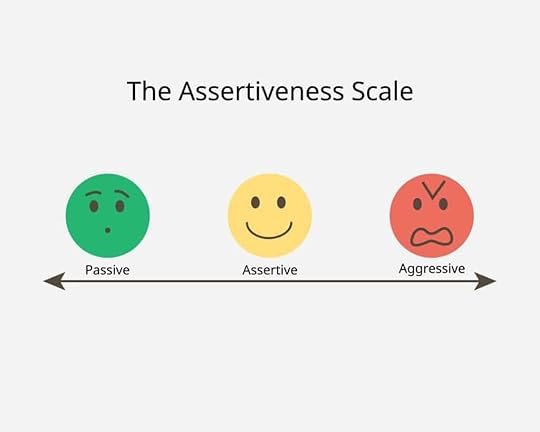
Assertiveness means standing up for yourself and your beliefs in a respectful way. It doesn’t mean being pushy or trying to force your opinion on others. And it doesn’t involve putting down other people to make yourself feel better.
Communicate your needs and wants clearly and directly without being hurtful, and be open to hearing other people’s opinions, even if you disagree with them.
There’s a fine line between being assertive and being aggressive. If you’re not sure where that line is, err on the side of caution. It’s better to be polite than rude.
However, understanding boundaries can be important. Being too passive can cause you to internalize and have built up resentment.
Boundaries Updated and Expanded Edition: When to Say Yes, How to Say No To Take Control of Your Life $12.99This book answers the following questions:
Can I set limits and still be a loving person?What are legitimate boundaries?How do I effectively manage my digital life so that it doesn't control me?What if someone is upset or hurt by my boundaries?How do I answer someone who wants my time, love, energy, or money?Why do I feel guilty or afraid when I consider setting boundaries?How do boundaries relate to mutual submission within marriage?Aren't boundaries selfish?
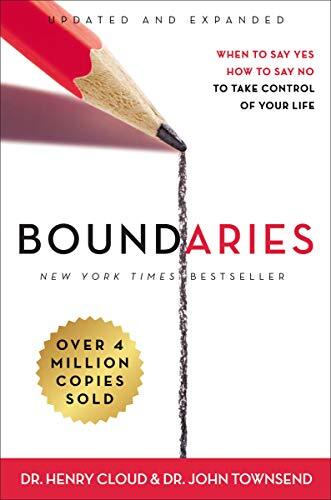 Buy Now We earn a commission if you make a purchase, at no additional cost to you. 10/16/2022 03:22 am GMT Don’t Cut Other People Off
Buy Now We earn a commission if you make a purchase, at no additional cost to you. 10/16/2022 03:22 am GMT Don’t Cut Other People OffAnother practical communication tip is to avoid cutting other people off. It’s tempting to jump in and finish other people’s sentences, especially if you think you know what they’re going to say. But this can be frustrating for the other person, making you seem like you’re not listening.
If you want to be an effective communicator, learn to listen. Give the other person your full attention and resist the urge to interrupt. It also means trying to see things from their perspective. Empathy is an essential ingredient in effective communication.
If you can understand how the other person feels, finding common ground and resolving conflicts will be easier.
Use “I” StatementsAnother helpful communication tip is to use “I” statements. Instead of saying, “You always leave your dirty clothes on the floor,” try saying, “I feel overwhelmed when I see dirty clothes on the floor.”
When you use “I” statements, it takes the focus off of the other person and puts it on you. It also shows that you’re willing to take responsibility for your feelings.
Of course, you don’t have to take responsibility for the other person’s feelings. However, be willing to see things from their perspective.
Be FlexibleFinally, to be an effective communicator, you must be flexible and willing to adjust your approach depending on the situation.
If you’re trying to communicate with an angry person, you might need to use a different approach than if it were a happy person. And if you’re trying to speak with someone from a different culture, you should be aware of cultural differences.
The bottom line is that effective communication requires flexibility. The more flexible you are, the more successful you’ll be at communicating with others.
Why Is it Important to Have Effective Communication?Effective communication is vital for many reasons. Here are some of the specific benefits of effective communication:
Build better relationshipsResolve conflictsMake better decisionsImprove your emotional intelligenceBuild trustProvides clarity and directionBoost productivity at workBecome a more effective leaderFinal ThoughtsWherever you find yourself in life, effective communication will help you achieve your goals. If you want to be successful in your personal and professional relationships, start working on your communication skills today.
Thankfully, the ability to communicate effectively is a skill anyone can learn. Use these tips to become a better communicator and build stronger relationships with the people around you. You will be glad you did.
October 2, 2022
Does Buying a Car Help Your Credit? The Best Advice for 2022
When you’re driving away from the dealership in your brand-new car, you’re probably not asking yourself, “Does buying a car help your credit score?” However, that’s an important question to answer.
Let’s find out how your credit score could be impacted by signing that car loan.
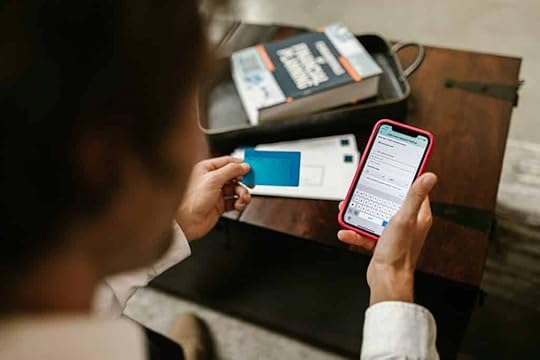 Top Ways Buying a Car Affects Your Credit
Top Ways Buying a Car Affects Your CreditBuying a car has the potential to increase your credit score, but it can also go the other way and drop. How are you to know?
It all depends upon when and how you make the payments for your car loan. To find out if you can afford a car or not, consider if you can make timely payments, which will result in your credit score going up.
However, if you cannot make payments on time or even miss a few, you will see a negative impact on your credit scores.
If you’re wondering if buying a car helps your credit, then we’re here to make things clear. Here are a few ways your credit score is affected when you decide to buy a vehicle.
Hard InquiryWhen you apply for a car loan, the first course of action your account goes through is a hard inquiry. Unfortunately, a hard inquiry will lead to an automatic lowering of a few points of your credit score for a couple of months. The good thing is that even though your car loan application gets forwarded to many lenders, major credit bureaus will all count as a single inquiry.
A new inquiry usually forms when a lender takes a peek at your credit history. Some of the newest systems don’t even consider inquiries for auto loans at all.
Acquiring DebtOnce you buy a car and acquire a loan for it, your credit report will reflect the additional debt that will impact your credit score. As soon as the debt is accepted, you will see a drop in your credit score as your liabilities increase. Depending on the price of the car and the loan amount, the fallen points may vary.
That is because you haven’t made any payments yet. The drop in score is mainly due to the uncertainty regarding your ability to pay off the debt in time.
Making Timely PaymentsPayment history is one of the most significant factors that affect your credit score. By making timely payments, you can enhance your credit score.
As you continue to make these payments, your credit score will increase steadily. Most of the time, this increase will trump the initial drop in the score and ultimately help you make your way towards a good credit score.
Managing Your Credit MixWhen you apply for a car loan, lenders can see a credit mix on your credit history. Your credit mix is the different sorts of credits you have, such as revolving credits, installment credits, and more. Your ability to manage a mix of various types of credits proves that you are creditworthy and will give your credit score a positive boost.
Most individuals already have ongoing revolving credit, such as using a credit card, affecting your credit utilization. Adding an installment credit in the form of a car loan and successfully paying it off in time will lead to a positive impact on your credit score.
Where To Find Auto Loans on Your Credit ReportAlthough sometimes, your auto loan might be missing from your credit score due to the infancy of the loan. Another reason is if the three major credit reporting bureaus, Experian, TransUnion, and Equifax, haven’t yet updated the loan information on your credit score, usually because the lender hasn’t forwarded the information to the credit reporting agencies.
However, if you are looking for auto loans on your credit report, the place to consult would be the Industry-Specific Score.
What Is an Industry-Specific Score?When applying for a loan for specific purposes such as the purchase of a car, student loans, mortgages, and more, FICO will help you. They provide you with Industry-Specific Scores that will help the lenders decide on the loan terms, such as the future installments and interest rates.
The FICO Auto Scores reflect your credit behavior in terms of any loans you have acquired and your management history concerning such loans when it comes to your auto loans. The score ranges from 250 to 900.
If you have a bad Auto Score, your future auto loans will have unfavorable terms such as increased interest rates and higher monthly installment payments.
How To Make Sure Your Credit Is Ready to Buy a CarBuying a car and taking on a car loan is a big financial responsibility, and you should have adequate preparations if you are planning on going along with the decision. Here are a few quick tips to help you get your credit ready to buy a car.
Check Your Credit Report and ScoresAlthough you might be able to get an auto loan with less than perfect credit scores, you might get charged higher interest rates. So, by checking up on your credit, you will know where you stand regarding auto financing.
Pay Bills on TimeWhether you want to buy a house, a new car, or plan to refinance, you should always consider paying off your bills on time. That is because your payment score makes up for the most significant part of your FICO score. Making up for 35% of your total score, if you want to improve your FICO scores, you can do so by taking on under-the-table jobs to pay off any late payments that are currently due.
However, when you have multiple bills to pay off, it is only human to forget a few due dates. That is why it is advisable to set up automated payments for your bills or set up reminders or alarms on your phone.
Pay off Credit Card DebtThe first order of business to improve your credit score is to repay your credit card debt, thus lowering your credit utilization ratio. The most optimal credit utilization lenders hope for is 30% or less.
High credit utilization scores enhance the risk level you carry in the eyes of lenders, which makes them more concerned about you as a borrower. Additionally, a low credit utilization will lower the debt-to-income ratio, which is also a good indicator of your credit history to the lenders.
Apply for Credit Only As a Last ResortAs mentioned above, an auto loan can lead to a hard inquiry placed on your credit report, lowering your credit score. Although the effects of an inquiry only last for a few months, if your credit report shows multiple inquiries in the same timeframe, you can be considered a credit risk.
The best way to avoid this is to get your auto loan pre-approved before you start comparing lenders’ rates, as they make an inquiry every time a lender views your credit report. However, in the case of a pre-approved loan, the credit scoring models will treat all inquiries as a single one. Therefore it’s advisable only to set up a line of credit if necessary.
Dispute InaccuraciesNever settle for anything when it comes to your credit scores, and if you feel like there are any inaccuracies on your credit report, you should address them.
To do this, you can start a dispute regarding the item you think has been inaccurately recorded. Filing a dispute will not affect your credit score. But it might help you enhance it when you were right, and there were discrepancies present.
For example, you made a timely payment, but the lender failed to report it on time, and it shows up on your credit report as a late payment. In such a case, filing a dispute will help you get your credit scores back to where they are supposed to be.
Save Up for a Down PaymentA down payment is a payment you make at the start of financing your car. At least a 10% down payment is necessary to be made to finance a car.
One of the reasons why saving enough money is important is because a larger down payment will help you lower your interest rates, monthly installments, and less risk of defaulting on the loan.
Fast Ways To Build a Positive Credit ScoreIf you have decided to finance an automobile but want to improve your credit score, here are a few quick fixes that will help you enhance your credit score.
Ask for Higher Credit LimitsWith a higher credit limit, you will have the same outstanding balance. The total credit increases will help lower your credit utilization ratio and instantly enhance your credit score.
Although getting a higher credit limit can be difficult, if you have experienced an increase in your income, you have a high chance of getting an increased credit limit.
Authorized UserIf you know someone who has a good credit history, ask them to have you added as an authorized user adding their account to your credit report. The best part about this is that you won’t have to use their card or even know the bank account to increase your credit score. It allows you to benefit from their payment histories and use their credit limits to lower your utilization ratios.
Collection AccountsPaying off your collection account will mitigate the chances of getting sued over a debt. You can also report to the collection agencies to stop registering the debt as you have paid it off.
When checking up on your collection accounts, ensure that everything is in order and the recorded charges aren’t inaccurate or too old to be on your report.
Secured Credit CardsAnother way to enhance your credit score is to use a secured credit card. This type of credit card is backed by a cash deposit, which gets paid upfront, and the money you use gets taken out of this deposit.
Credit MixA user’s ability to manage a credit mix reflects very positively on your credit history. Most people already have a revolving credit set in place, as most have a credit card.
To get a credit mix going, consider getting a loan on top of that and make timely payments. That will represent you as a person capable of managing their debt, adding to your overall credit report.
Frequently Asked QuestionsCar loans can be a tricky business, and you must have some questions regarding them. Here are a few frequently asked questions that might be able to help.
Should I Buy a Car with Bad Credit?Buying a car with bad credit is possible. However, the interest rates offered to borrowers with bad credits are much higher, leading to them paying more than the conventional interest rates. The lenders would look at your credit history, and if you appear to have bad credits, you get the high-risk credit borrower label.
How Much Will My Credit Drop If I Buy a Car?Although it isn’t guaranteed that your credit drops after buying a car, you often experience an initial dip. An inquiry on your account to acquire a car loan causes this dip.
A hard inquiry can lower your FICO points by a total of 10 points. That will change once you begin making payments against the debt, and there remains uncertainty around your ability to repay the debt. After you have made a few timely payments, you will be able to recover from this deficit in your credit score. This article originally appeared on Wealth of Geeks.
Originally posted 2020-02-04 16:51:00.
14 Things That Matter When You Are Learning How To Get Out Of Debt Fast

Getting out of debt with this method works like this:
You make a list of your existing debt and sort them through the highest interest rates to the smallest.Pay off debt faster by setting aside extra money to pay off your debt on the highest interest rate. Make minimum payments on the rest of your debts until you pay off debt on the highest interest loan.By paying off debt that’s the highest interest rate and then repaying your debts, you’ll reduce debt and reduce the overall interest rate you pay.Continue to work through this method until you are debt-free.Becoming debt-free in this method works exceptionally well as long as you have an additional amount of money in your budget to make extra payments.
These tips below are some of the best methods on how to get out of debt fast that will make it seem like a much easier journey!
Why Is Getting Out of Debt Fast Worth it?90% of individuals say that money has an impact on their stress levels. A study found this entails impacts your health.
Having financial problems can cause it to be harder to save, budget in advance, or even start writing a list at a local store.
If extra debt money was available, it might be worth boosting financial confidence, morale, and opportunities to save. Financial experts regularly recommend two ways of reducing debt: the “avalanche” technique and the “snowball” technique. The two programs will help you focus on debt reduction. The snowball method is first to get your debts paid off, then take the next payday.
Both of these methods, however, require you to structure yourself and stick to a routine. If you would rather have support and someone to help you, it would be worth joining a service like Resolve to support you in solving your debt fast.
Good Days Start With Gratitude: A 52 Week Guide To Cultivate An Attitude Of Gratitude: Gratitude Journal $6.99A great way to keep track of what you are thankful for and focus on all the good you have in your life.
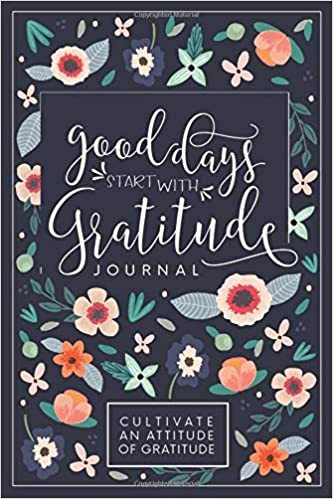 Buy Now We earn a commission if you make a purchase, at no additional cost to you. 10/30/2022 12:02 am GMT 1) Stop Borrowing Money
Buy Now We earn a commission if you make a purchase, at no additional cost to you. 10/30/2022 12:02 am GMT 1) Stop Borrowing MoneyThis may seem pretty straightforward, but many people don’t realize that borrowing money is the first step to accumulating more debt. So stop doing it! If you’re in a situation where you need credit cards or loans for emergency purchases, then find other forms of financing, which we will cover later on in this article.
2) Resolve Your Debt, AffordablyIf you’ve tried to resolve your debt but couldn’t afford the high fees that come along with many solutions, there is still a way forward. Resolve is an app that connects people with experienced debt agents for a low monthly membership fee. They will help you lower interest rates, stop collection calls, negotiate with creditors to refund fees, and provide budgeting tools, all for a monthly subscription that averages about $17. After resolving your debt, you can give a tip for completed services, but it is entirely optional.
It feels good to be free from the stress of debt collectors calling all day long or worrying about how much money is left in your bank account at the end of each month.
Find out more about Resolve here.3) Plan to Pay off Debt: Try a Debt SnowballFor getting rid of all of the bad debts within the fastest possible time, you should use the debt snowball method.
What Is a Debt Snowball?Debt Snowball is a debt repayment technique where you prioritize your debts and start with the smallest balance, paying off one at a time and moving to each larger balance. Personal finance author Dave Ramsey popularized the method, and it can be suitable for anyone who wants to build momentum in paying off debt.
How To Use the Debt Snowball Method To Pay Off DebtIf you want to try this method for getting out of debt, it’s pretty easy to do, simply:List your debts from the smallest balance to the largest; consider student loans, personal loans, and credit card debt.Pay the maximum amount per month on your smallest debt while paying the minimum payment allowed on the rest.After the smallest debt is paid, continue applying the same principles to the second smallest debt.Continue this process until all debts are paid and you are debt-free!4) Use the Debt Avalanche StrategyAn alternative method to the Debt Snowball method is the Debt Avalanche which is another good option for paying off your debt.
Debt ConsolidationDebt consolidation and balance transfers can be helpful to see all of your debt in one place. They help you pay off the debt by putting all the companies you owe money to in one place.
If you struggle to organize your debt and want a manageable monthly payment, this option could be worth exploring.
Balance transfers on credit cards can also be worth exploring if you have a decent credit rating and have started to pay interest on an expired 0% credit card. For instance, if you have multiple credit cards with debt, you could use a balance transfer to transfer all credit card debt so that it is in one place and you are paying much less interest.
What to watch out for in this method:
Balance transfer fees often apply, so make sure to check.Some credit card providers will only let you transfer a limited amount, so be sure to check before you apply.This method would support you to get out of debt, but to pay off debt fast, you will need to make extra payments on top of the monthly consolidated debt.5) Renegotiate Credit Card DebtMany people in debt don’t realize they can renegotiate their terms with credit card companies. If you can call up your bank and ask for more favorable rates, then it will be much easier to pay off the debt faster without having to worry about accruing interest on top of what you already owe.
All you need to do is ask! As long as your repayment history is solid, it would be best if you had an excellent chance of getting better terms.
You can apply this tip to other expenses to lower your overall bills, as credit companies aren’t the only business that will want to keep your business. Try contacting the below too and trying this method:
Your utility providersAny insurance providers you havePhone billsAny memberships that you are out of contract on (pretend to cancel and see what they are willing to offer you to stay)It’s always worth asking! Imagine what difference you could make toward your financial goals by saving 10% off each of your bills!
6) Consider Balance Transfers & There are many reasons why people get into debt.Many don’t know how to get out of it, but this article will show you what you need to do to get that weight off your shoulders! This post will give you some practical suggestions on how to save money and pay down debts.
It is possible for anyone, regardless of their situation, income level, or credit score. The first step is recognizing the problem and taking steps towards solving it. So let’s get to the steps to answer how to get out of debt.
7) Create the Best Budget To Pay Off and Stay Out of DebtThe best budget for you might be quite different from another. Flexibility is a vital ingredient in success and will keep you in check during a crisis.
Use goal-setting to help guide your budget. Ask yourself questions like:
When do you want to be out of debt?What are you willing to give up to get there fast?Make sure there is freedom in your budget for savings so that you avoid going into further debt but don’t have so much freedom so that you allow yourself to keep spending.
The easiest way to pay off debts fast is to make sacrifices. If you don’t go without what you don’t want, you will never be able to get rid of your financial debt. Use your learned experience to create a better budget than last time.
Steps You Should Take to Start a Budget.1) You need to know where you stand today. Start by writing down all of your committed expenses and compare that to your current income.
2) Review your current committed expenses – are there any you can reduce? For example, gym memberships you don’t use.
3) Read about some of the different budget methods and pick one that sounds the easiest for you to follow and what you will most likely stick to. My personal favorite is the 50/30/20 budget.
Make Sure To Avoid Past Mistakes When Setting a Budget.People are creatures of habit, and spending money isn’t an exception. We shop in the same markets, eat in the same restaurants and drive the same vehicle.
This will cost you in the long run if you don’t make changes, affecting your ability to take responsibility in the future. If you don’t modify your financial habits, you’ll end up in debt forever. You cannot make do without taking that step. You have to make better decisions in what you do. You are likely to see a change in your spending habits immediately.
Think about what habits you have that could be costing you extra money on your budget. For example, how many times are you eating out per week?
Make Sure To Create a Family BudgetIt is common to see a household member be responsible for all their family’s financial affairs. Sometimes this means only that one individual knows the family’s finances. If you are trying to succeed, it’s crucial to have a strict budget to clear everything, and everyone knows where your debt goes.
It would be best to have everyone involved in the house as a participant in tracking and budgeting steps. Come clean with your partner and friends. But if they aren’t familiar with your finances, then they cannot understand your situation. You must involve them in this process so they see the same thing. There might be some challenging discussions.
8) Work Side HustlesSometimes having a strict budget isn’t enough. You might find that even on the most stringent budget, you are still living from paycheck to paycheck. If this is the case for you, it might be time to try a side hustle to generate extra cash.
If the task of doing another job seems exhausting, make the job a short-term job where you can earn enough money for paying down debts. You can also do jobs at home, such as selling old clothes online or renting out a room at Airbnb.
9) Use the Power of Extra PaymentsMaking extra debt repayments can reduce your credit utilization ratio, which can improve your credit score. Combine this method with either the debt avalanche or snowball method mentioned earlier in this article so that your extra payments are strategic.
10) Reduce Your SpendingThe average cost per month for impulse purchases was $155 and then rose to $183 a month when the pandemic occurred. This amount is about $1800-2700 annually if you pay it off. How can this be improved?
The only way to get out of debt is to cut down on your expenses. It prevents new debt from accumulating and gives you an incentive to buy something to pay down your debt. Start small by not buying too much coffee per day. For example, make coffee at home for less than $20 a week, totaling $1,000 per year. It will become easier for you to curb your spending.
11) Face the MusicIf you’re trying to have unopened bills disappear, the first step is to admit you’re wrong. It’s time to face the music and accept you need to make some changes to get your financial life back in order.
If your expenditure regularly exceeds your net income, either you must dramatically change your lifestyle (sell your home, buy a smaller apartment, take part in a second job) or declare bankruptcy. And sometimes, you might want to look at another step depending on where you are going. Start introducing money to your budget, or you may have to file for bankruptcy. However, there are ways to improve your finances before taking that step.
12) Consider Becoming a One-Car HouseholdThe average owner of a car spends more than $9k per year on buying and operating. If you decide that you’ll sell your second car, even taking the occasional cab may still be cheaper than owning a second car.
Plus, you could use the money you get from your car sale to help you pay off some debts, and if you have your car on a monthly loan, by selling it, you will free up more of your monthly budget!
13) Create an Emergency FundImmediately after paying off debt, you should start setting up the emergency fund. If you just saved 10% of your salary each month in 10 months, you would have a month’s salary saved. Think about that if you ever got into a situation where you lost your job, how beneficial it would be to have a month’s salary saved to get you back on your feet.
14) Get Out of Debt by Living Below Your MeansTrying a simpler life will help you get rid of a lot of debt as fast as possible. Living below your means enables you to save money to build your emergency savings account and helps you get out of debt, as you will be able to use any money saved to make extra debt payments.
Making frugal choices with coupons, using existing items rather than new, sticking to your list of groceries, and refraining from impulse purchases can help you get rid of debt sooner. When you live below your means, shop frugally even if your wage allows you to shop for more expensive items.
Some actions you could take to live below your means, meaning you spend less, include:
Get Rid of Your CableThe average cost of cable is $64 a month. If you struggle to make ends meet every month and want to become debt-free, you need to cut back on not essential items.
A cable is one of those non-essential things in life. You could save money by replacing your cable subscription with an online subscription service like Netflix, which is a fraction of the cost.
Use the money saved on cable to pay over minimum payments or build up your emergency fund.
Cut Up Your Credit CardsMake steps to stop your impulsive spending by cutting up your credit cards. This is more a preventative measure, but it will also prevent you from making any impulse purchases.
Do a Grocery Brand SwapSwapping all of your branded groceries for non-branded (generic) groceries is an easy way to live below your means and an easy switch to make to save money.
Have a No Spend MonthHave a month where you agree not to spend anything apart from essential purchases like food shopping. This will help you get into the mindset of living below your means.
Write down at the start of the month what you are giving up. At the end of the month, compare this list which what you missed. You might be surprised that you haven’t missed out on as much as you think.
How To Get Out of Debt Fast: Bottom LineIt’s hard to get out of debt and can take years if you don’t know how to do it. Fortunately, there are a few simple steps that will help you pay off your bills faster than ever before. Whether you want to pay off a student loan or are seriously in debt, the tips in the article can help you get back on the right track.
We hope these tips have been helpful, and we wish everyone the best of luck on their journey towards being free from debt!
This post originally appeared on Wealth of Geeks and has been republished with permission.
Originally posted 2020-02-01 16:24:00.
Vitamin D Benefits & Signs of Deficiency

 Megan Santiago-Holistic Momma
Megan Santiago-Holistic MommaHolistic Mom of 1 and 1 on the way, student of the human body. Former health educator, and current psych major.
Read Her BooksThe human body can produce vitamin D when exposed to the sun. You can avoid vitamin D deficiency symptoms by boosting your intake of the vitamin through diet and supplementation. Checking your vitamin d levels is a great way to know how much a deficiency, may be impacting your overall health.
Vitamin D is important for many reasons. These include maintaining healthy teeth and bones. The vitamin also protects from various health conditions like type 1 diabetes. The benefits of vitamin d for fighting infection and disease are never-ending.
Vitamin D is a misnomer because it is not a vitamin. Instead, it is a precursor of a hormone called prohormone.
The human body is not capable of producing vitamins on its own. Thus, you need to get them from your diet. In contrast, the body can create vitamin D. you can also increase your intake of vitamin D through diet and exposure to the sun.
This post will discuss the main benefits of vitamin D, the effects on the body of vitamin D deficiency, ways to boost your vitamin D intake, as well as good dietary sources of the vitamin.
https://holistic-momma.com/2019/11/30... D BenefitsAs mentioned, the body produces vitamin D during sun exposure. The vitamin plays many crucial roles in the body.
Following are the main benefits of Vitamin D:
Healthy Bones – Vitamin D is important in regulating and maintaining the body’s calcium and phosphorus levels. This, in turn, is crucial for keeping the bones healthy.The body needs the vitamin to help the intestines in stimulating and absorbing calcium, as well as in reclaiming calcium excreted by the kidneys.
Children with vitamin D deficiency are at risk of contracting rickets, a condition that softens the bones, resulting in severe bow leggedness. In adults, deficiency in the vitamin may result in osteomalacia that leads to muscular weakness and poor bone density.
Osteoporosis may also result from having insufficient vitamin D intake. According to studies, more than 53M people in the US are either at an increased risk or are already seeking treatment.
Lower Risk of Contracting Flu – According to some studies, the vitamin offers protection from the influenza virus, although other studies tend to believe that vitamin D has no such effect on flu risk. Thus, further research is necessary to prove the claim of the vitamin’s protective effect on the body against the flu virus.Blood Sugar Level Management and Diabetes Prevention – Symptoms of diabetes result from insulin deficiency or the lack of insulin secretion resulting from an increase in insulin resistance. Calcium is vital for the secretion of insulin. Vitamin D promotes proper absorption and utilization of calcium that results in proper control of insulin secretion.Fighting Cancer & DiabetesAccording to a study published in the Current Diabetes Reviews in 2015, the replacement of vitamin D is beneficial for type 2 diabetes in terms of incidence, complications, and control of the disease. More evidence also links the lack of vitamin D to diabetes.
Protection Against Cancer – Symptoms of deficiency of vitamin D have been linked to heightened cancer development risks, specifically breast, prostate, and colon cancers.In research published in the Frontiers of Endocrinology, it was found that the vitamin influences factors that contribute to the growth of a tumor, as well as in cell differentiation and apoptosis. It was also established that increased exposure to sunlight and vitamin D circulation are linked to the lower incidence and mortality in numerous cancer types.
Heart Disease Prevention – A growing number of studies link vitamin D deficiency to higher risks of cardiovascular disease because of its involvement in the regulation of cholesterol levels, inflammation, and blood pressure. https://holistic-momma.com/2019/10/27...Fighting DiseasesAccording to research conducted by Vanderbilt University Medical Center, vitamin D deficient people are at higher risk of dying from coronary heart disease, hypertension, and other heart-related disorders.
Immune System Enhancement – Vitamin D helps in the replication of healthy cells. It also plays a vital role in defending against autoimmune disorders, and less serious ailments like colds and flu.Human immune cells contain vitamin D receptors. It has been proven that the vitamin helps avoid excessive or prolonged inflammatory responses. Inflammation usually triggers a lot of autoimmune disorders and chronic diseases such as high blood pressure, IBS and other digestive issues, multiple sclerosis, and rheumatoid arthritis.
Hormone Regulation and Mood Improvement – Because vitamin D is a hormone that affects brain functioning, deficiency in the vitamin triggers mood disorders such as seasonal affective disorder, depression, anxiety, insomnia, as well as severe mood problems occurring during PMS.Low vitamin D levels also interfere with the production of estrogen and testosterone. This leads to imbalances that cause various unwanted symptoms.
Improvement in Memory, Concentration, and Learning – Vitamin D affects your decision-making ability, concentration and capacity to retain information. Students with insufficient levels of vitamin D tend to perform badly on standard exams, have poor decision-making skills, and find it difficult to complete tasks requiring attention and focus. Some studies link low vitamin D levels to multiple sclerosis and schizophrenia. Causes of Vitamin D Deficiency
Causes of Vitamin D DeficiencyMost people get 50 to 90% of their vitamin D from casual exposure to sunlight. The human skin produces the vitamin when touched by the sun’s ultraviolet B. It can be assumed that one of the major reasons for the insufficient vitamin D production in most people is today’s modern and predominantly indoor lifestyle.
Having said that, here are the most common causes of vitamin D deficiency symptoms:
Lack of Sunlight Exposure – In the past, people spent a lot more time outdoors, working and doing errands outside. Things are different today. Children spend practically their entire waking hours indoors – surfing the net, watching TV, and playing video games. Adults, on the other hand, work mostly indoors and exercise in gyms. They rest at home during their free time, where they don’t get enough sunshine.With all the time you spend indoors, don’t be surprised if you don’t get enough vitamin D from the sun. Just like billions of other people the world over.
Vitamin D in the SkinYour vitamin D system starts in the skin, and not from the nutrients you get from food. While vitamin D food sources can boost the levels of the vitamin to avoid deficiency, the sun provides a more effective way to fill your vitamin D requirements.
Excessive Use of Sunscreens – As it is, you may not be staying outdoors long enough to get some exposure to the sun. When you do, you use sunscreen almost 100% of the time. After all, doctors encourage using sunscreen to prevent skin cancer, which has become prevalent in recent years – both in adults and children – even during winter.When you use sunblock SPF 8, you practically lower your body’s ability to produce vitamin D by 90%. Using a sunblock that has a higher SPF such as 30, which doctors usually recommend, you further lower your body’s vitamin D-producing capability by as much as 99%. This aggravates your deficiency because even as you stay outdoors, your body is prevented from converting sunshine into vitamin D.
What Are the Symptoms of Vitamin D Deficiency?Various scientific studies have proven that deficiency in vitamin D has links to various health problems including:
Heart diseaseOsteoporosisHypertensionAutoimmune diseasesCancerArthritisInsomniaAsthmaMultiple sclerosisDiabetesAutismPsoriasisFibromyalgiaChronic painShould I Get Tested?People with the above health conditions should be tested for vitamin D deficiency, and so are people who manifest the following symptoms:
WeaknessDepressionChronic fatigueAnxiety Trouble sleepingWeakened immune systemBroken or weak bonesSwelling and inflammationThere is only one way to determine if you lack sufficient levels of vitamin D, and that is by having your doctor perform 25-hydroxy vitamin D testing or simply 25(OH) D test. The results will reveal if you are deficient, and the severity of the deficiency.
Keep the following figures in mind when getting the results of your blood test and vitamin D levels:
50+ – good level30 to 50 – supplementing with vitamin D may be necessary; spending more time out in the sun and adding vitamin D sources into your diet may help30 – very deficient; immediate action needs to be taken to bring the numbers up.Consult your physician on how you can supplement your vitamin D levels in case you have very low levels or severely deficient based on the test results.
Other kinds of vitamin D tests show slightly elevated or normal levels, but are inaccurate and hide a severe deficiency. The 25(OH) D test is, by far, the most accurate in determining your actual levels of vitamin D.
What is the Difference Between Vitamin D and D3?The difference between vitamin d and d3 is mainly their absorption rate. There are two kinds of supplemental vitamin D: D2 (ergocalciferol) and D3 (cholecalciferol). The vitamin D precursor is found both in animal and plant products. However, animal-derived Vitamin D3 products are deemed to be more beneficial and absorbable.
This is because man-made vitamin D is produced in two ways.
Vitamin D2 is made by irradiating yeast as well as other molds (called vegetarian vitamin D2)Vitamin D3 is created by irradiating animal cholesterol and oilsThe type that the human body naturally makes is known as cholecalciferol or vitamin D3. The body can convert some vitamin D2 for use in bodily functions, but the human body prefers and can utilize D3 in a much more effective manner.
Unfortunately, most dietary supplements and vitamin D-fortified food items often contain ergocalciferol (vitamin D2), which is not as absorbable or convertible into what the body requires.
Animal-derived D3 products, particularly from the cholesterol content in these products is the most proximate to what natural sunlight produces in people when the skin starts to convert UV light. D3 is said to convert 500x faster than its D2 counterpart, and it is estimated to be 4x more effective in people.
Vitamin D Derived from the SunA lot of people think that the best way to fill their vitamin D requirements is by eating fish, taking supplements (for example, cod liver oil), and drinking milk. Although these are good dietary sources, they pale in comparison to sun exposure in terms of vitamin D absorption.
When you sit under sunlight without sunscreen for about 10 minutes, you will absorb about 10,000 units of D vitamin. But, bear in mind that the figure may vary from one person to another, depending on the skin tone.
How much can you get?Melanin, a substance that helps determine your skin color, is released when you are exposed to the sun’s ultraviolet rays. The less melanin your body has, the lighter your skin tone will be. The reverse is true when your body has higher levels of melanin.
The more sun exposure you get, the more melanin your skin gets. Up to 90 to 95% of the average person’s vitamin D is derived from casual exposure to the sun.
The volume of melanin in the skin affects how much vitamin D your body will produce. Thus, the fairer your skin color, the more efficient you can make vitamin D.
The cholesterol found in the skin helps convert melanin to a usable D vitamin that is distributed to the different parts of the body. Thus, some people experience a moderate to the slight increase in cholesterol levels during the winter when sun exposure is limited, and people often spend time indoors where the temperature is warmer.
 Dietary and Other Sources of Vitamin D
Dietary and Other Sources of Vitamin DWhile you can get D vitamin from food with vitamin D, your best bet to avoid symptoms of deficiency of vitamin D is to get enough exposure to sunlight.
According to research, however, consuming food rich in vitamin D can also help you fill up your requirement for the vitamin. Thus, it wouldn’t be a bad idea to add these natural vitamin D sources in your regular diet.
So, what are vitamin D foods?Carp fishHalibutEelMackerelSalmon UV light-exposed maitake mushroomsWhitefishUV light-exposed Portobello mushroomsRainbow troutSwordfishSardinesCod liver oilMilkEggsTunaHow Much Sunlight Do You Need?Spend around 10 to 20 minutes in the sun, unexposed, daily. You’ll get around 1,000 to 10,000 IUs. It is a wide range because the figure depends on where you live, the time of year, as well as how exposed your skin is. If you have a light skin tone, you will require less time. But, if your skin tone is darker, or you live farther north like Boston, you will require about 30 minutes of the sun during summer just to get around 1,000 IUs of vitamin D.
If You Liked This Article, Feel Free to Subscribe to our weekly newsletter below!Originally posted 2020-01-21 06:44:00.
15 Cheap Meals that’ll Save You Money
Going out to restaurants and eating fast food can be incredibly expensive. One of the most significant ways to stretch your budget is by making cheap meals at home.
To save money on groceries, you need to get creative by cooking cheap recipes.
People commonly associate eating on a budget with eating things like packaged ramen, canned chili, or pasta every night.
Before you go out and buy enough ramen to last a month, there’s a better way to stretch your food budget. You can still enjoy fresh, flavorful, and delicious home-cooked meals without breaking the bank.
Cheap Meals to MakeBelow you’ll find cheap breakfasts, lunches, and dinners. While these easy recipes might use inexpensive ingredients, you won’t feel like you’re sacrificing taste.80 Easy Keto Recipes For Your Ketogenic Diet
There are some great family-friendly meals included too.
Cheap BreakfastsShortcut Apple Fritter BreadWho doesn’t love a good shortcut? Especially when it involves making gooey and wonderful apple fritter bread.
Many apple fritter bread recipes use 14 or more ingredients; this recipe only has five and is much easier to make.
This recipe costs only $1.01 per serving and uses pre-made biscuits and apple pie filling.
Get Recipe From Easy Budget Recipes
Sausage Breakfast CasseroleThis filling casserole recipe is hearty and made with sausage, eggs, cheese, and a bottom layer of crescent dough.
Not only will it keep you full for hours, but it’s also an easy dish to make to feed a big family and kids.
Get Recipe From The Lazy Dish
Peanut Butter Overnight OatsYou can’t find an easier breakfast with only five minutes of prep time to throw all the ingredients together.
One commenter wisely pointed out that this recipe is inexpensive because, besides the almond milk, all the ingredients are non-perishable, so you can use them to make multiple batches.
Get Recipe From Minimalist Baker
Spinach, Egg, and Cheese BitesThese egg bites are loaded with protein and will give you the energy you need to start the day.
Store them in the fridge and reheat them in the microwave when you need a quick breakfast.
Get Recipe From Real Housemoms
Cereal BarsReady in only ten minutes, these cereal bars are kid-friendly and delicious.
Since you can use any cereal, this recipe is incredibly versatile. Changing the cereal will make it so you’ll never get bored of these bars.
Get Recipe From I Heart Naptime
Cheap Lunch RecipesWhite Bean SaladMade with simple ingredients you may already have in your pantry, this white bean salad is appetizing and healthy.
Since it only takes ten minutes to make, it’s also an excellent lunch to prep ahead of time in a big batch, so you’ll have lunches all week long.
Get Recipe From Simply Recipes
Pizza Bagel BitesIf you have kids, finding a lunch they love that the adults find tasty too can sometimes be challenging.
Kylie from Midwest Foodie mentioned a great tip: “Let your family make their own bagel bites! This is one of our family’s favorites because we can get each top of our bagel pizzas with whatever we want.”
These pizza bites will win everyone over in your household, and you only need four ingredients to make this delicious lunch.
Get Recipe From Midwest Foodie
Tuna and Egg SaladCanned tuna is a cheap protein source and a wonderful pantry staple to stock up on when you see it on sale.
Kim from Kim’s cravings highlights some other creative ways you can serve this classic salad besides using bread to make a sandwich.
Serve the salad on cucumber slices, stuffed in an avocado, or as a lettuce wrap for a yummy keto or low-carb lunch idea.
Get Recipe From Kim’s Cravings
Pesto Pasta SaladPasta is another cheap grocery item to make sure you always have on hand.
Pesto, pasta, cheese, fresh greens, and crunchy bell peppers complement each other perfectly; you’ll love every bite.
This flavorful pesto salad is a great way to get your daily veggies.
Get Recipe From Gimme Some Oven
Ranch Chicken TendersChicken tenders baked to crisp golden perfection with buttermilk ranch flavors are ready in only 25 minutes.
Whether you eat them hot or cold, they’re perfect for dipping in ranch or your favorite sauce.
Enjoy these chicken tenders for both lunch and dinner.
Get Recipe From The Frugal Girls
Cheap Dinner IdeasCarne Asada TacosMarinated overnight and cooked on the grill, carne asada tacos have just the right smokey flavor.
If you’re someone that does batch cooking, you can freeze the marinated meat, then defrost and throw it on the grill when you want a quick supper.
Get Recipe From Good Cheap Eats
Vegetable Stir FryMeat can be costly; that’s why having a night or two of meatless meals a week can save you money.
Enjoy the stir-fry alone or with rice, noodles, ramen, or zoodles to make this meal even more filling.
Get Recipe From The Recipe Critic
Poor Man’s LasagnaCheaper than traditional lasagna, poor man’s lasagna is so easy to make you’ll want to make it over and over again.
This recipe is a creative spin on lasagna, made with penne pasta, sauce, herbs, ground beef, and multiple types of cheese.
Get Recipe From Fabulessly Frugal
Slow Cooker Chicken Tortilla SoupIncorporating some homemade soup recipes into your meal rotation is a smart choice when living a frugal lifestyle.
Making a double batch will last you multiple dinners, and you can even bring the leftovers for lunch.
Costing only $1.63 per serving, this is one of the cheapest soup recipes out there.
The secret to this cheap soup is that there is only a single chicken breast in the entire soup, but since it has beans, corn, tomatoes, onions, and other ingredients, you won’t even notice the small portion of chicken.
Since chicken can be an expensive ingredient, limiting the amount is a genius idea.
Get Recipe From Budget Bytes
Sweet and Sour MeatballsMaking a recipe that requires buying ingredients, you don’t already have can be expensive.
It’s best to find some recipes that use items you already have in your fridge or pantry, such as these meatballs.
This recipe even gives you substitution ideas, so if you don’t have one ingredient, you can easily swap it out for something else you already have on hand.
Get Recipe From Fun Cheap Or Free
Cheap Meal TipsNow that you have some inexpensive recipes, here are some easy tips that’ll help you save even more money on meals.
Always have a spare meal on hand in the freezer that you can make in a pinch.
If you’ve had a long day and don’t feel like cooking, it’s tempting to order takeout.
By having a freezer-friendly meal you can make with little effort, you’re less likely to spend money on eating out.
Find some cheap snacks to enjoy between meals.
Finding some snacks to buy that are inexpensive yet satisfying will help you eat less when dinner rolls around.
Smaller portions of your meals can help stretch your budget and also mean more leftovers for the next day.
Learn how to find inexpensive recipes easily.
Many of the recipes on this list are from blogs specializing in cheap recipes. But besides the obvious of finding recipes on frugal living blogs, how else can you spot inexpensive recipes?
Here are some tips for spotting budget-friendly recipes.
Look for recipes with a small list of ingredients. Shoot for recipes with five or fewer ingredients or at most seven ingredients.Don’t buy special ingredients or herbs for one dish. If a recipe calls for a specific ingredient, but you know you won’t use any leftovers of the ingredient because it’s not something you commonly use, skip that recipe.Pay attention to recipe reviews. Reading reviews and comments will save you from possibly making a bad meal that you don’t like, which can lead to food waste.Don’t forget about simple ingredients.
With hundreds of choices at the grocery store, it’s easy to forget about basic ingredients. However, opting for versatile ingredients you can use in multiple dishes is cost-effective.
Here are some simple and cheap ingredients to stock your freezer, fridge, and pantry with:
Beans and lentilsEggsFrozen fruit and vegetablesOatmealPastaPotatoesRiceFind recipes the entire family enjoys.
While not always possible, cooking just one meal that everyone in the family loves is much cheaper than cooking separate meals.
If you’re cooking a separate meal for the kids, that’s a lot of ingredients to buy, not to mention more work.
Find some kid-friendly meals that the adults in your household will also enjoy.
Final ThoughtsCutting down on food costs is an effective way to save money. However, eating cheap doesn’t mean you can’t enjoy meals you and your family love.
These recipes have two things in common; affordability and flavorful
Enjoy one of these amazingly cheap recipes this week. Now that you know how to find cheap recipes, you’ll never run out of ideas again.
This post originally appeared on Hello Sensible.
Originally posted 2020-06-25 03:16:14.



